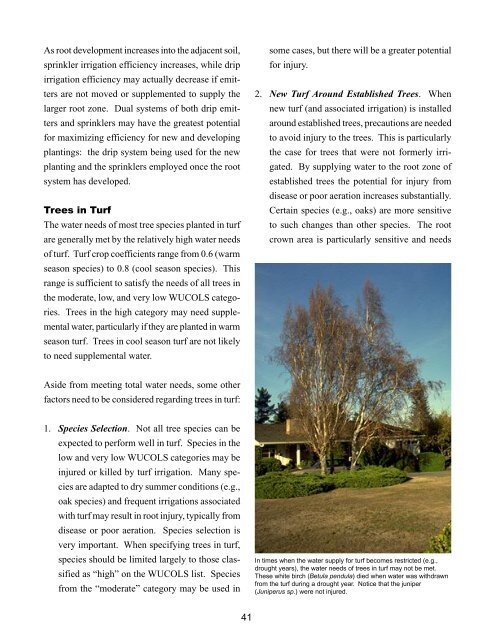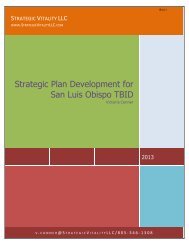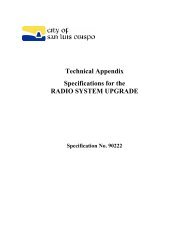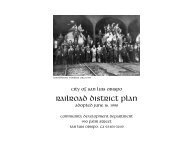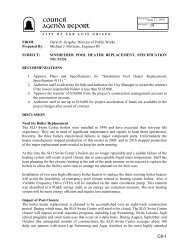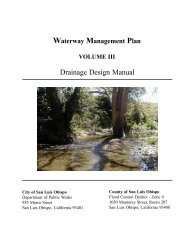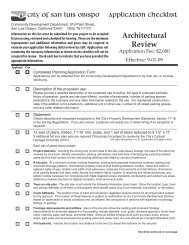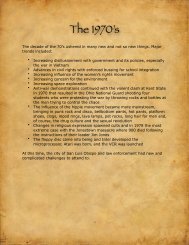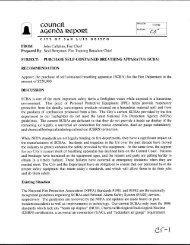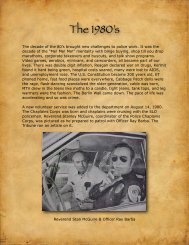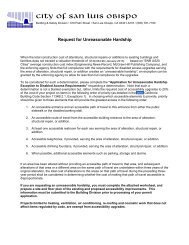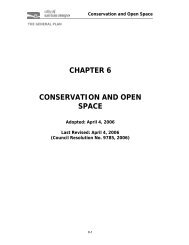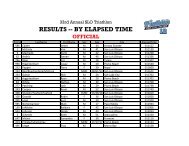Guide to Estimating Irrigation Water Needs of Landscape Plantings
Guide to Estimating Irrigation Water Needs of Landscape Plantings
Guide to Estimating Irrigation Water Needs of Landscape Plantings
You also want an ePaper? Increase the reach of your titles
YUMPU automatically turns print PDFs into web optimized ePapers that Google loves.
As root development increases in<strong>to</strong> the adjacent soil,<br />
sprinkler irrigation efficiency increases, while drip<br />
irrigation efficiency may actually decrease if emitters<br />
are not moved or supplemented <strong>to</strong> supply the<br />
larger root zone. Dual systems <strong>of</strong> both drip emitters<br />
and sprinklers may have the greatest potential<br />
for maximizing efficiency for new and developing<br />
plantings: the drip system being used for the new<br />
planting and the sprinklers employed once the root<br />
system has developed.<br />
Trees in Turf<br />
The water needs <strong>of</strong> most tree species planted in turf<br />
are generally met by the relatively high water needs<br />
<strong>of</strong> turf. Turf crop coefficients range from 0.6 (warm<br />
season species) <strong>to</strong> 0.8 (cool season species). This<br />
range is sufficient <strong>to</strong> satisfy the needs <strong>of</strong> all trees in<br />
the moderate, low, and very low WUCOLS categories.<br />
Trees in the high category may need supplemental<br />
water, particularly if they are planted in warm<br />
season turf. Trees in cool season turf are not likely<br />
<strong>to</strong> need supplemental water.<br />
some cases, but there will be a greater potential<br />
for injury.<br />
2. New Turf Around Established Trees. When<br />
new turf (and associated irrigation) is installed<br />
around established trees, precautions are needed<br />
<strong>to</strong> avoid injury <strong>to</strong> the trees. This is particularly<br />
the case for trees that were not formerly irrigated.<br />
By supplying water <strong>to</strong> the root zone <strong>of</strong><br />
established trees the potential for injury from<br />
disease or poor aeration increases substantially.<br />
Certain species (e.g., oaks) are more sensitive<br />
<strong>to</strong> such changes than other species. The root<br />
crown area is particularly sensitive and needs<br />
Aside from meeting <strong>to</strong>tal water needs, some other<br />
fac<strong>to</strong>rs need <strong>to</strong> be considered regarding trees in turf:<br />
1. Species Selection. Not all tree species can be<br />
expected <strong>to</strong> perform well in turf. Species in the<br />
low and very low WUCOLS categories may be<br />
injured or killed by turf irrigation. Many species<br />
are adapted <strong>to</strong> dry summer conditions (e.g.,<br />
oak species) and frequent irrigations associated<br />
with turf may result in root injury, typically from<br />
disease or poor aeration. Species selection is<br />
very important. When specifying trees in turf,<br />
species should be limited largely <strong>to</strong> those classified<br />
as “high” on the WUCOLS list. Species<br />
from the “moderate” category may be used in<br />
In times when the water supply for turf becomes restricted (e.g.,<br />
drought years), the water needs <strong>of</strong> trees in turf may not be met.<br />
These white birch (Betula pendula) died when water was withdrawn<br />
from the turf during a drought year. Notice that the juniper<br />
(Juniperus sp.) were not injured.<br />
41


